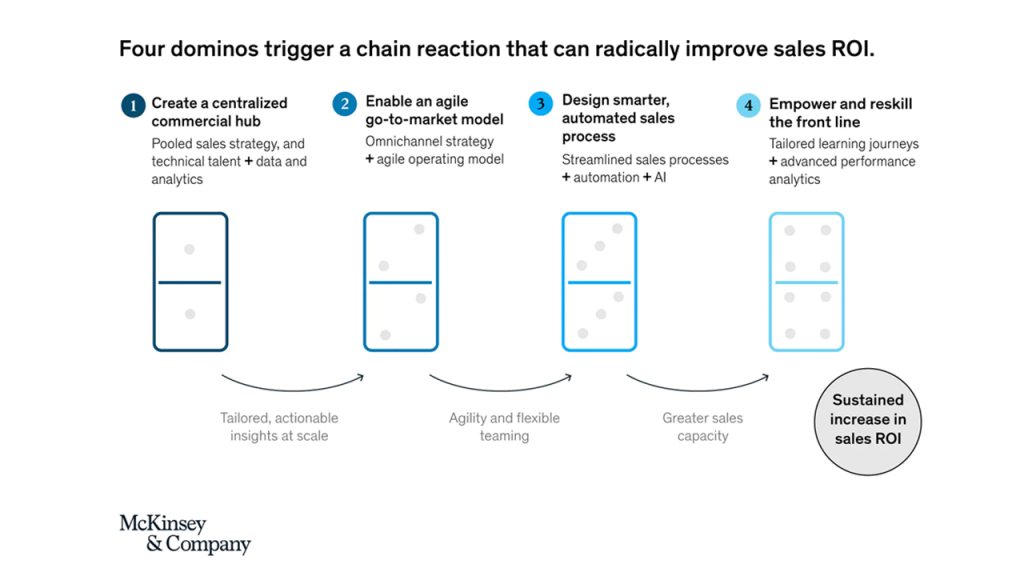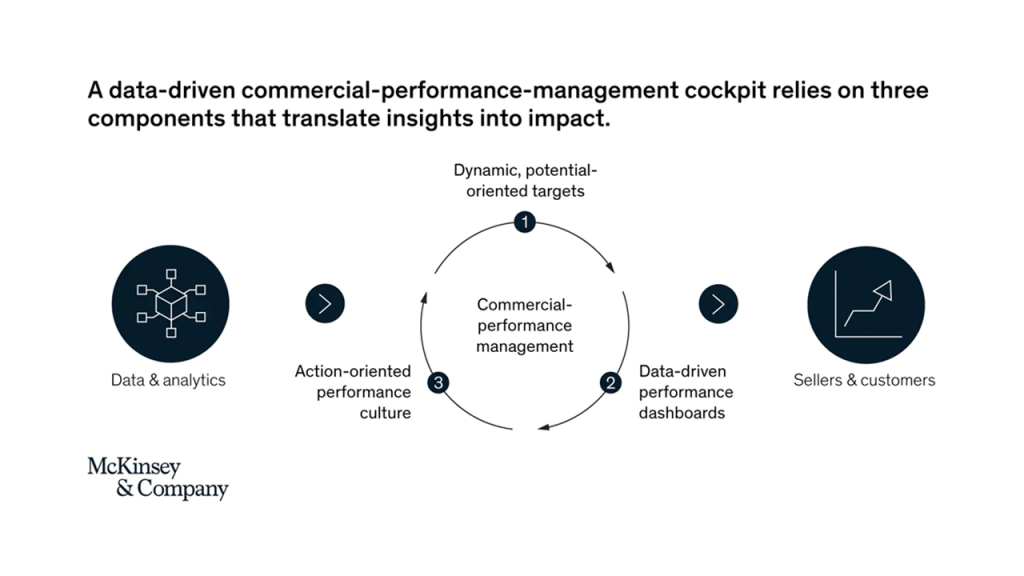Data-Driven Sales in B2B
(6 minute read)
This blog examines some insights into how B2B organisations are driving data-led sales performance.
The general trend of customer shifts towards greater digital engagement is also impacting on B2B firms causing them to cover more channels and manage more interactions. B2B customers are also more demanding of a B2C type consumer experience within a business buying context.
The Covid-19 pandemic has only intensified these challenges. Commercial organisations expect that this trend of more digital and remote go-to-market models will remain long after the pandemic.
Analysis by McKinsey suggests a four-domino triggered chain reaction that can increase sales ROI:
- Creating a central commercial hub in which sales strategy, talent, data, and analytics are pooled together
- Enabling an agile go-to-market model that draws on an omnichannel strategy and agile operating model
- Designing automated sales processes that are streamlined where possible by AI and ML
- Empowering and reskilling frontline sales staff with tailored learning journeys, incentivisation, and advanced AI-powered analytics
These steps in turn develop actionable, targeted insights, supported by agile and flexible learning, and in turn augmenting sales capacity, triggering a sustained increase in sales ROI.

Commercial Cockpit
Managing a data-driven commercial performance requires a centralised unit – a commercial cockpit – that integrates data, derives insights, and translates them into concrete actions. McKinsey suggests that the best B2B performance management systems have three elements:
- Dynamic sales targets developed from analytics
- Granular performance data organised in dashboards
- Performance-oriented culture

Analytics-based Dynamic Sales Data
B2B companies require clear commercial goals and metrics designed to track them. Rather than use traditional methods of sales, margins and increased percentages, new commercial goals must be based on demand forecasting which in turn draws from a variety of granular internal and external data sources and market factors. Abundance of data allows for extensive KPIs monitoring and the resulting insights can contribute to an optimised strategy of achieving those targets.
Data-Driven Dashboards
A highly automated easy-to-understand dashboard as a singles source of truth can be useful to track the progress of commercial performance against targets in real time. The dashboard can combine historical sales performance with forward looking sales pipelines, uncovering opportunities across all organisational levels. If this data dashboard is to be hosted within the business intelligence unit, then all the data needs to be compiled systematically into a centralised commercial data mart and linked to Enterprise Resource Planning (ERP) and Customer Relationship Management (CRM) systems. This data mart can be further enriched with internal data like online footprints, external data, competitor performance, Share of Voice (SOV) and Share of Wallet (SOW) activities.
Performance Culture
Action-oriented performance cultures rely on frequent action-oriented huddles and flexible incentives. Huddles encourage open discussions about performance, identifying early warnings and taking corrective action. Flexible incentives within agile working can introduce course correction early, adapting to fast changing market conditions and getting organisation wide buy in for recognising and responding to market challenges.
Commercial performance management is also augmented by appropriate talent and operations management. B2B organisations need to staff and establish a crack cross- functional commercial performance team. They must design a minimum viable cockpit to determine targets. And finally they need to test and adjust continuously.
B2B organisations can benefit greatly from a centralised commercial operation built around data and analytics to effect end-to-end sales transformation. It will help organisations react nimbly to market conditions and stay ahead of the competition.

